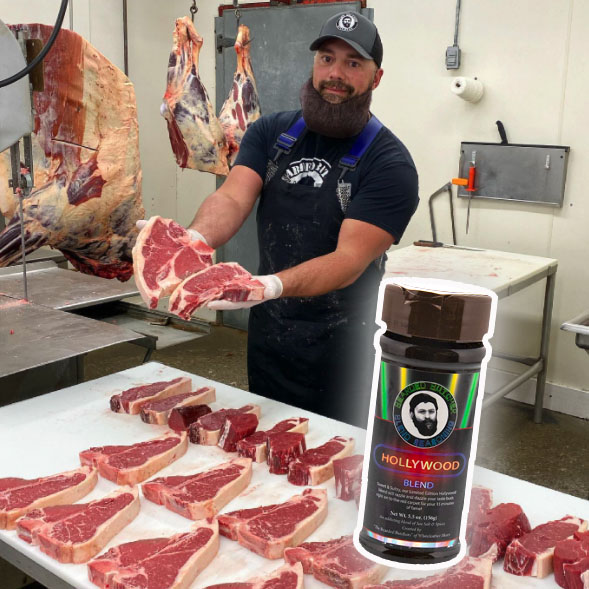
Recently Updated
by: Brooke Newberry
Cheat Sheet: How to Pair Craft Beer with Food
–> Download Pints, Forks & Friends Craft Beer & Food PDF
The refreshing thing about newer craft beer culture is that rule breaking is expected and encouraged. Brewers are steadily more flavor-adventurous, uninhibited, and just ballsy overall when it comes to manipulating their process. Herbal hops, yeast traces, fruit flavors, and toasty malt are all personalities waiting to be manipulated and explored in terms of food pairings. You have so much to work with. Let what you already know and what you like empower you. You don’t always have to go by the rules – if you aren’t a crazy hophead and aren’t too keen on bitter beers, then don’t try the uber bold IPA with that. These are just suggestions to get you on the right track.
Start with the beer. Pick out any elements that stand out in that particular beer. Sip slowly to determine the dominant characteristics. Don’t swallow immediately. Let it rest on your palate; roll around the weight on your tongue. Note the mouth feel and breathe out during the process – this helps uncover any characteristics your tongue may have not picked up. This process of exhaling is called “retro-olfaction.” Like we learned in elementary school, try to detect any elemental tastes: sweetness (think nutty or malty characteristics), bitterness (think hops), acid (think citrus), salt (mineral qualities). Also take note of the carbonation. When you swallow the beer, you’ll have a chance to notice any after-taste qualities like dryness.
You are in control. What is the goal of the pairing? Decide whether you want the beer and the food to balance each other out, or whether you want to enhance a particular element, theme, or ingredient in the dish. You have to ask yourself which route would make the beer and the food total standouts versus knocking each other out. Also, don’t forget to think about the preparation and how that will change the flavors of the dish. Are you frying, caramelizing, or blackening?
1. Matching Pairing
- If you want to enhance or embrace a certain element in a dish, choose a beer with like qualities in flavor and weight.
- Example: A smoked porter would compliment the smoldering flavors of barbequed meats and would add intensity to the meal experience.
- Example: A cream stout with Ben and Jerry’s Heath Bar Crunch. The chocolate and espresso notes in the stout will enhance the chocolate pieces and coffee base. Also, the fullness of the beer will be able to stand up to the richness of the dessert.
2. Contrast Pairing
- If you have a heavy dish and want to create some elegance or add a playful acid element to the plate, then you’ll want to choose a beer with qualities that oppose or “cut” the dish.
- Example: Pale ales would contrast nicely with smoky flavors of a barbecue dish because those citrus elements in the beer would smack the heavy flavors of the barbecue around a little bit to give the dish some lift.
- Example: Serving an understated and sweeter American wheat beer with a spicy Thai dish would help balance some of that peppery heat.
An Example of a Match and Contrast Combo:
Take fried calamari. A beer to simultaneously balance the richness of the food and enhance the fried crunch would be ideal. A great choice would be an IPA. The bitter quality of these beers (American IPAs especially have a tendency to be very bitter and complex) can cut fat components, while, simultaneously, the bitterness of the beer is being toned down by the fullness of the dish. At the same time, the zesty bitterness of the IPA will also really heighten the crunch element of the calamari, making it all the more appetizing.
3. Regional Pairing
If you’re at a loss, the classic beer styles from a particular region can always be paired with the classic dishes from that same area. Also, if the meal you are enjoying infused with a particular beer, then you should drink that beer with it.
4. A word on Pairing with Spicy Foods
Heat should be paired with beers with a malty quality to help cut the heat. Be careful with hops and spicy food – the hops will most likely intensify the heat (if you love spice, go for it!). Malty-style beers include porters, brown ales, bocks, Scottish ales, and stouts. Remember the rhyme “sweet calms heat.”
5. When in Doubt
The heavier the beer, the heavier the dish. The lighter the beer, the lighter the dish.
THE BEERS:
Pale Lagers and Pilsners
Summer’s natural choice. These styles are light, clean, thirst quenching, and well carbonated. Both hops and malt range from low to medium, depending on the brewer. These pair well with lighter dishes, because the two wont overwhelm each other. A bit of a stronger pils works well with sushi or fish dishes. Most lagers and Pilsners wouldn’t be able to stand up to super rich dishes or heavier desserts.
Pairing: salads, light seafood dishes, starches
Pale Ales and India Pale Ales (IPAs)
Hops! IPAs are an extra-hopped style of Pale Ale and are zingy and bitter with a great bite, especially American IPAs. You’ll typically find citrus and floral traces. When pairing, IPAs can handle a little more richness and than other Pale Ales. IPAs are great at combating rich dishes. Don’t pair these with high-acid foods unless there is an element in the dish that fully balances the acid.
Pairing: fried foods, curry, Mexican foods, oily fishes
Hefeweizens and Other Wheat Beers
Great for both warmer and cooler months, these are easily season-adaptable. These styles of cloudy beers anchor warm spices such as clove, citrus notes, and sometimes even a tinges of banana. Hefs are experts at developing the sweet notes of a dish while also enhancing richness or creaminess. Keep in mind that American wheat beers are the blandest, while German varieties are the strongest. Often seen garnished with citrus.
Pairing: gouda cheese, fruit centric dishes, hearty grains, seafood, warm spiced desserts
Amber Ales
Amber ale is an American term used to designate a variety of beers that range in color from light gold to deep red. Ambers are all around beers that will go well with just about any dish with a little heft to it. Medium-bodied and a tad richer than a pale ale, this brew’s mild caramel flavors, strong hop character, and grassy notes makes it super versatile. Ambers work especially well with stews, soups, and savory BBQ dishes.
Pairing: pastas with red sauces, pizzas, chilis, pork dishes, caramelized vegetables
Brown Ales
Brown ales also rarely have trouble partnering up. Nutty caramel and chocolate notes enhance this dry, medium-hopped ale. Not too heavy, not too roasty – browns are great for fall. Think about pairing these with root vegetables or peanut sauces to bring out the roasted nut quality in the ale.
Pairing: chicken satay, rutabegas, roasted pork, sausages
Porters
Porters vary in intensity and style and can hold their own when paired with robust dishes. These workhorses are deep and creamy, with dark-roasted maltiness, chocolate, and coffee flavors. They wont exhibit the same dark bitterness of dryer stouts.
Pairing: scallops, bbq, dark chocolate, burgers, pumpkin pie, steaks, smoked foods
Dry Stouts
Medium-light to medium-full in body, dry stouts offer a thick, milky head, chocolate and coffee flavors, and are medium to high in hop-bitterness. Guinness is the classic example. Dry stouts are deep and rich but not in a malty way. They are great in pairings with super hearty dishes because they can hold their own up against bold flavors without filling you up or oversaturating your meal experience.
Pairing: oysters, pot pies, rich stews
Cream Stouts
Also known as milk stouts, this indulgent style is backed with chocolate and coffee, and sustains an overall sweetness that’s perfect for paring with desserts. Creams could even be drunk as desserts themselves. Do not pair these with acid-forward dishes – the sweetness will muscle out the acid.
Pairing: super savory sauces, chocolate desserts, fruity desserts, plop a scoop of ice cream in one for a beer float, or try a chicken dish with a sweeter sauce

